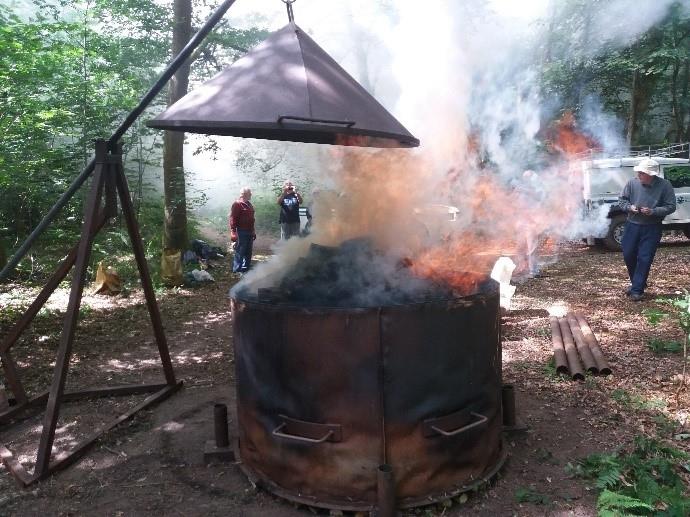Why do we coppice?
As you walk around Loggerheads Country Park you may notice some areas where the trees have been cleared. This is a traditional woodland management practice called Coppicing. Coppicing is the practice of cutting down trees of a certain age and species such as Hazel to promote strong regeneration. This also promotes the growth of the ground flora in the same area. The timber created by clearing the trees is then used around the park to build fences, restore path edging and create charcoal.
 Volunteers making charcoal
Volunteers making charcoal
 Coppice after trees have been cleared
Coppice after trees have been cleared
Coppicing does not only benefit the trees and flowers but also the birds, small mammals and insects such as butterflies. With the increased sunlight reaching the woodland floor, wild flowers such as Wood Anemone and Dog Violets thrive. These intern attract insects such as butterflies and bees which help to pollinate the surrounding trees and shrubs. With the increase of insects and fruit baring trees and shrubs the population of birds and small mammals increase as well. The boost to the woodland that coppicing brings is felt all the way from the smallest mouse and bird right up to the grand oaks and large mammals.
 Wood Anemone (Anemone nemorosa)
Wood Anemone (Anemone nemorosa)
 Dog Violet (Viola riviniana)
Dog Violet (Viola riviniana)
Coppicing is conducted in a rotation so that there is always trees of varying ages throughout a woodland. This helps the woodland to thrive and makes it more resilient to pests and diseases. Coppicing has been conducted for hundreds if not thousands of years and thus native woodlands have evolved to benefit from the practice. It is one of many woodland management practices that ensure our woodlands flourish and live on for future generations to enjoy.